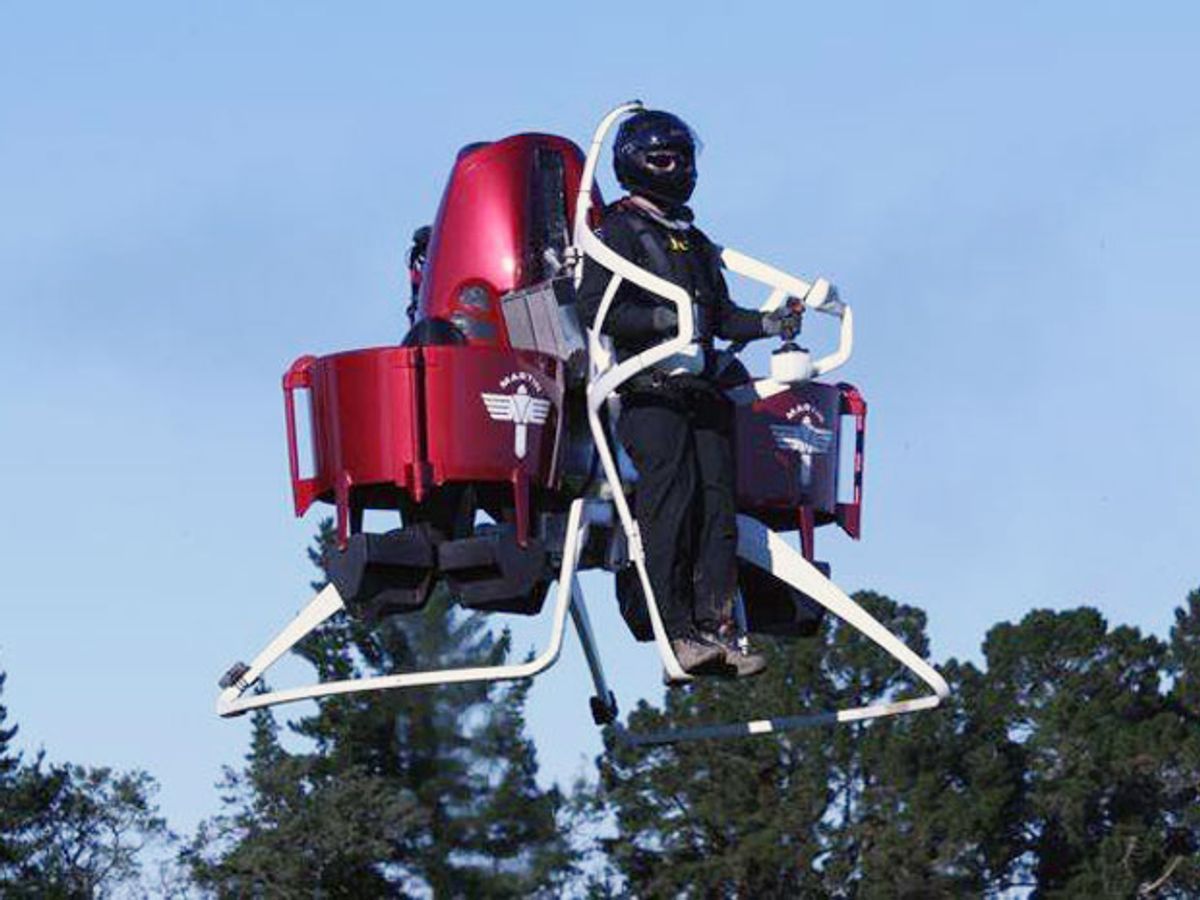"Where's my jetpack?"—a longstanding geeky question—has always gotten the same answer: It's just around the corner.
Now comes Martin Aircraft, of Auckland, New Zealand, with a proposal to sell a one-person flyer that uses a two-stroke gasoline engine to power two ducted fans. Purists may quibble that fans do not a jetpack make, but with a claimed working ceiling of 1000 meters, a flying time of up to half an hour, and a range of 30 kilometers, this one may indeed be the world's first practical solo flying machine, just as Martin claims.
Practicality has been the jetpack's weak point ever since the 1950s, when the U.S. military first showed an interest in the idea. An early effort by Thiokol engineers gave a nitrogen-powered kick to a test pilot for a very short time indeed. Later machines from Aerojet General and Bell Aerosystems used hydrogen peroxide rocket fuel, which, like the nitrogen, produced exhaust cool enough to spare the pilot. However, they were only energetic enough to keep testers aloft for about 30 seconds, long enough for a quick scene in the James Bond movie, Thunderball.
The ultimate in cool exhaust that never quits is this Jetlev-Flyer [video], which is powered by water jets.
Problem is, the dangling water tube tethers you to a boat and its engine-powered pump, thus throwing out the very independence that makes the jetpack attractive in the first place. "You begin to bore me, Mr. Bond," the cat-stroking villain would say, as his flunky sends a spinning, razor-edged hat to slice the water tube in two.
Martin says it hopes to sell a US $250 000 version to military customers and a $150 000 version to emergency rescue services. It says that a true, personal jetpack for the kind of person who jumps out of a perfectly good airplane will come later. Maybe much later, if safety regulators, aviation rulings and liability lawyers have a say in the matter.
So, it's still just around the corner.
Meanwhile, waiting in the wings, getting better by the year, is the unmanned aerial vehicle, or UAV. Nobody seems to have yearned for them, back in the glory days of techno-optimism, but these robocopters are designed to do pretty much the same job. They get things and people out of tight spots. And unlike the jetpack, they don't put a pilot's life at risk.
The same sort of technology's involved, though, and maybe that's what Martin Aircraft is banking on. Take a look at this video of the jetpack's latest test flight: the one thing missing is the pilot.
Philip E. Ross is a senior editor at IEEE Spectrum. His interests include transportation, energy storage, AI, and the economic aspects of technology. He has a master's degree in international affairs from Columbia University and another, in journalism, from the University of Michigan.



